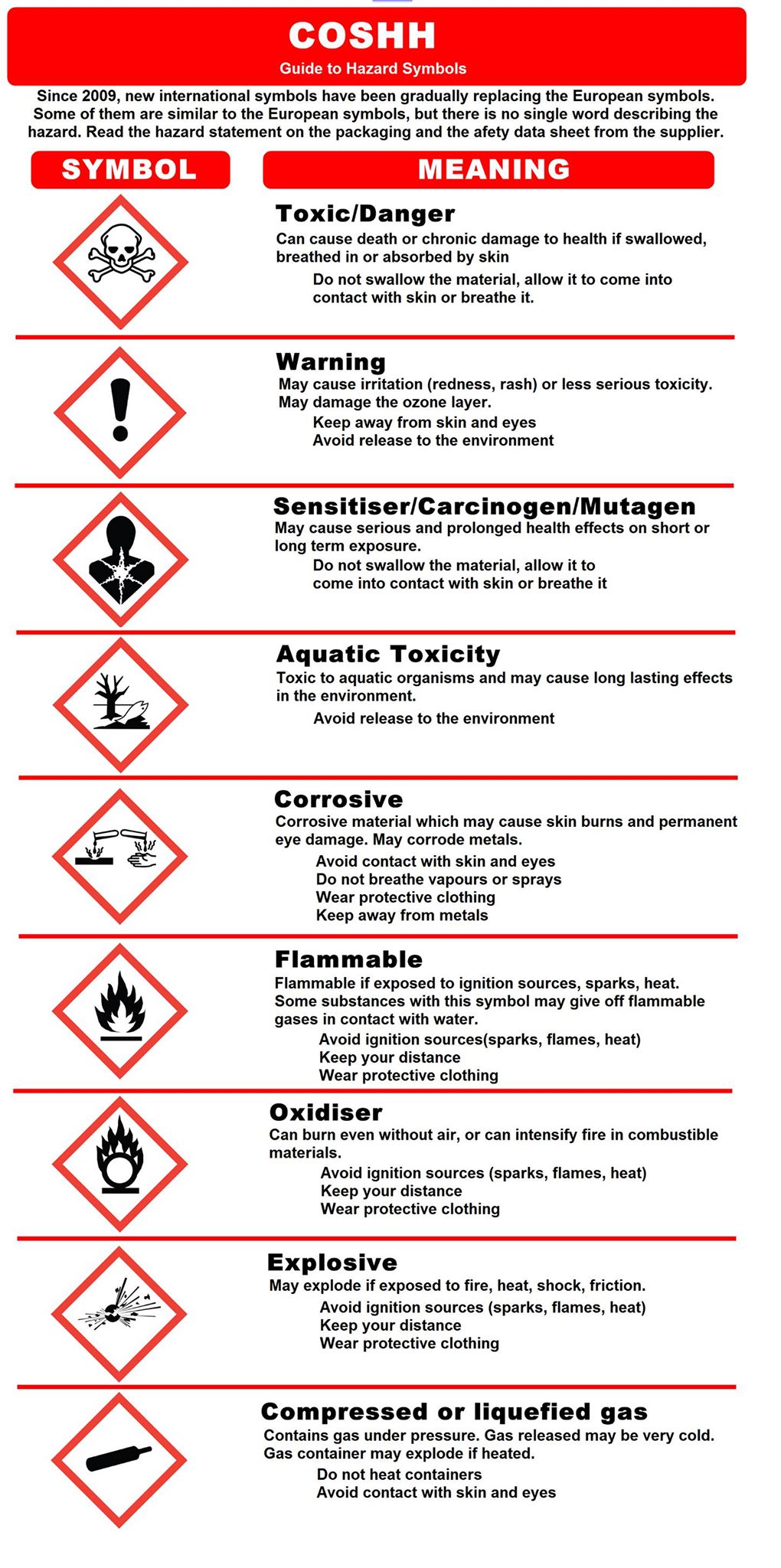Treat all chemical with respect.
Chemicals should be considered as hazardous, as they might have negative impact for its users and environment. Work with substances hazardous to health is subject to the requirements of the Control of Substances Hazardous to Health Regulations 2002 (COSHH). Substances defined as being hazardous to health include those that are irritant, corrosive, harmful, toxic or very toxic.
Never use unlabelled chemicals
Chemicals must be clearly labelled. All users of chemicals must know the labels of substances being in use. Read chemical warning and instruction before each use.
Wear PPE (Personal Protective Equipment)
Always wear appropriate protective clothing indicated in Material Safety Data Sheet. Gloves must be worn at all time while handling chemicals.
Avoid chemicals mixing
All steps should be taken to prevent unnecessary and unwanted contact of different chemicals. Therefore, do not store chemicals under sinks as they may leak and some chemicals react when wet.
Be aware of transport and storage requirements
The chemical must be kept in a closed, original container at all other times. During chemical transportation and storage proper handling precautions provided by manufacturer must be observed.
Limit possible body structures contamination
Keep food, beverages and tobacco away from chemical use areas. Keep hands away from eyes, face, moth and body when using chemicals. Wash your hands after using chemical substances and follow general hygiene rules.
Keep your working practice safe
Make sure your working space is clear and possibly tidy. Keep emergency eye wash readily accessible. Any spills of the chemical must be carefully cleaned up. Prior to touching common items such as door knobs, any chemical residues from hands must be removed.
Always dispose chemicals properly
Dispose of waste and residues in accordance with manufacture instructions and local authority requirements.
Know COSHH warning symbols
IMPORTANT: If the accident involves personal injury or chemical contamination, follow the above steps. Do not give victim anything to drink if they are unconscious.
Inhalation: Remove victim immediately from source of exposure. Provide rest, warmth and fresh air. Get medical attention if any discomfort continues.
Place unconscious person on the side in the recovery position and ensure breathing can take place.
Ingestion: DO NOT induce vomiting. Get medical attention immediately. Provide fresh air, warmth and rest, preferably in comfortable upright sitting position.
Skin contact: Remove affected person from source of contamination. Remove contaminated clothing immediately and wash skin with soap and water.
Eye contact: Make sure to remove any contact lenses from the eyes before rinsing. Continue to rinse for at least 15 minutes and get medical attention



